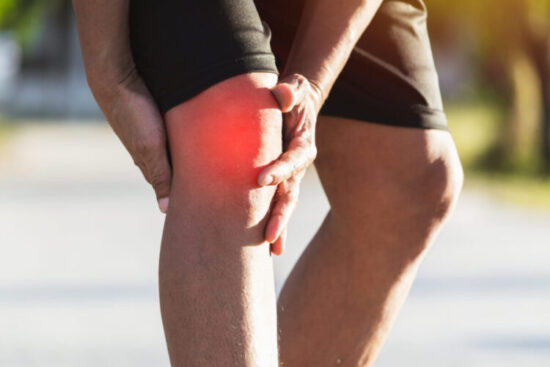How Tai Chi Can Heal Knee Osteoarthritis
Promising Research for Knee Pain Sufferers
This article focuses on exciting new research suggesting how Tai Chi, at a cellular level, can improve, even heal, knee OA.
I have a deep personal and professional interest in this subject. I suffered from chronic knee pain for years, then virtually eliminated that pain through Tai Chi.
That experience led me to create and teach the Tai Chi for Knee Health System, and to publish my first book, Tai Chi for Knee Health: The Low-Impact Exercise System for Eliminating Knee Pain (2019). This program has helped thousands of adults in 13 countries heal their knees, eliminate pain, and enjoy moving again.
So I was especially intrigued by new research uncovering the cellular dysregulation underlying knee OA and how Tai Chi may provide the ideal exercise to restore knee health.
New Study
Why osteoarthritis of the knee is called "a wound that does not heal" and why Tai Chi is an effective treatment.
Patricia Huston, MD, MPH,
Frontiers in Medicine, Nov. 2023
In this review article, Dr. Huston, a clinical researcher at the University of Ottawa, evaluates the latest research showing what causes knee OA at a cellular level and how multiple systemic factors can contribute to the progression of the disease.
She then details how Tai Chi practice can reverse knee OA-related the cellular dysregulation and ameliorate the systemic factors contributing to the disease.
The result: Improving, even healing, knee OA with Tai Chi.

What Causes Knee OA at a Cellular Level
A hallmark of knee OA is loss of articular cartilage in the knee. With loss of articular cartilage, bone and other structures become damaged. Pain and loss of function result.
Traditionally, OA was thought to arise from wear and tear of cartilage as we age, with knee injuries, some types of work, and obesity increasing the risk.
Dr. Huston describes how the understanding of the causes of knee OA has evolved. Researchers have discovered how an immune system response to injury, part of the normal healing and repair process, becomes dysregulated.
So instead of contributing to healing, that immune system response triggers chronic inflammation resulting in damage to cartilage, bone, and other tissues.
At the center of all this is an immune system cell, the resident macrophage.
Resident Macrophages and Normal Healing
Resident macrophages arise in all the body's tissues and remain there throughout our lives. They serve as the body's first line of defense against tissue damage from infection or injury.
When a macrophage detects tissue damage, it release molecules called pro-inflammatory cytokines. Cytokines signal to other immune system cells to come in and clean-up the damage.
Once clean-up is complete, resident macrophages release anti-inflammatory cytokines. This reduces inflammation and supports tissue repair and healing.
Macrophage Dysregulation and Knee OA
Recent research suggests that macrophages in the knee become dysregulated through recurrent abnormal loading of the joint.
That means macrophages are constantly in tissue damage clean-up mode, releasing pro-inflammatory cytokines. They don't switch back to tissue healing mode. This chronic inflammation contributes to breakdown of formerly healthy cartilage and other tissues.
This starts with macrophages in the synovium, the inside of the capsule surrounding the joint, then spreads to macrophages in cartilage, bone, and other tissues.
What Cases Macrophage Dysregulation?
Adverse Biomechanical Forces. Dr. Huston identifies the primary cause of macrophage dysregulation as adverse biomechanical forces going into the knee. Adverse forces can result from injuries, overuse, and other conditions, including wearing high heels.
Forces repeatedly concentrated in one part of the joint can cause low-grade trauma, constantly triggering macrophages to cause inflammation.
Increased Systemic Inflammation. Research suggests that low-grade systemic inflammation, characterized by increased levels of inflammatory cytokines in the blood, exacerbate the local inflammation associated with OA. Obesity is a common source of systemic low-grade inflammation and is associated with increased risk of OA.
Exacerbating Factors. Dr. Huston identifies several other factors that compound adverse forces on the knee: obesity, aging, lack of physical activity, and progressive muscle weakness.
Here's an infographic from Dr. Huston's article showing how these factors combine to promote chronic inflammation and prevent normal healing.

Why is Tai Chi an Effective Treatment?
Extensive research shows Tai Chi significantly reduces pain and improves function in people with knee OA.
Dr. Huston suggests that Tai Chi is so effective because it targets all the causes of macrophage dysregulation.
Optimal Biomechanical Forces. Tai Chi training teaches you to maintain stable knee alignments, keeping the forces going through the knee more balanced. (This will sound very familiar to my Tai Chi for Knee Health students.)
Decreased Systemic Inflammation. Research points to Tai Chi as an effective exercise for reducing systemic inflammation, both by increasing physical activity and reducing stress.
Stabilizing Factors. Dr Huston points to research showing that Tai Chi improves leg strength, improves proprioception, reduces peak forces through the knee, and is an effective fall prevention strategy. All these combine to protect the knee from further acute and chronic injury.
Here's an infographic from Dr. Huston's article showing how Tai Chi counteracts the pro-inflammatory factors associated with knee OA so normal healing can resume.

Knee OA— A Reversible Disease?
Dr. Huston suggests there is hope for recharacterizing knee OA from a "wound that does not heal" to a reversible disease, especially with early intervention.
And Tai Chi could be a key.
She writes:
"Tai Chi improves body alignment, strengthens the lower limbs, stabilizing the knee and decreases both local and systemic inflammation, enabling the normal healing and repair process to resume...."
"One of the most positive implications of this new understanding ... is that osteoarthritis is starting to be seen as a reversible disease. Understanding what is needed to re-establish the normal healing and repair process in knee OA may be a new motivation for lifestyle change."
Thanks to Dr. Huston for her outstanding, evidence-based, endorsement of the powerful health benefits of the low-impact, whole-body exercise known as Tai Chi.
Gift Ideas
Looking to help yourself or a loved one enjoy vibrant health 2024?
Consider one of my books:
Tai Chi for Knee Health: The Low-Impact Exercise System for Eliminating Knee Pain
Tai Chi for Balance: How to Stay on Your Feet and Avoid Falls.

Chris Cinnamon, JD, MS
Certified Exercise Physiologist
Head Instructor
Author, Tai Chi for Balance and
Tai Chi for Knee Health
Hi, Chris – –
Your description of knee problems and the benefit of Tai Chi for those problems is very compelling to me. Your description of past symptoms for your own knees fit my symptoms as well. I’m thinking I will get your Tai Chi for Knee Health Masterclass Online Course.
A question for you about that course: What’s the time requirement for each session of the course?
Best regards, George Shelton
Hi George, the video lessons are brief, averaging 12 – 15 minutes. For learning and practice, I recommend allocating 15 – 30 minutes/day. Once you learn all the exercises, 15 – 20 per day is plenty.
Keep me posted of your progress!
Best,
Chris Cinnamon